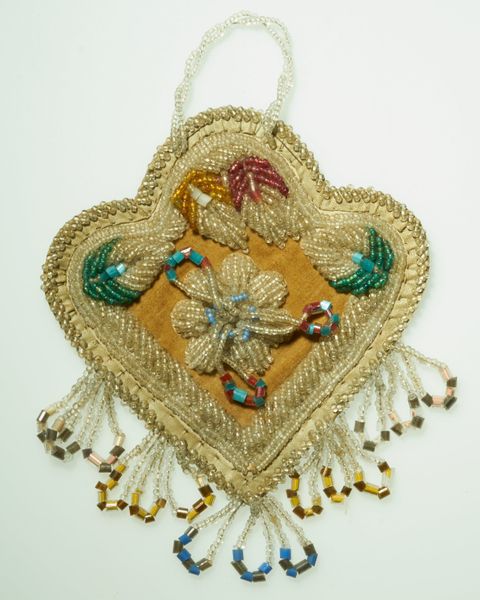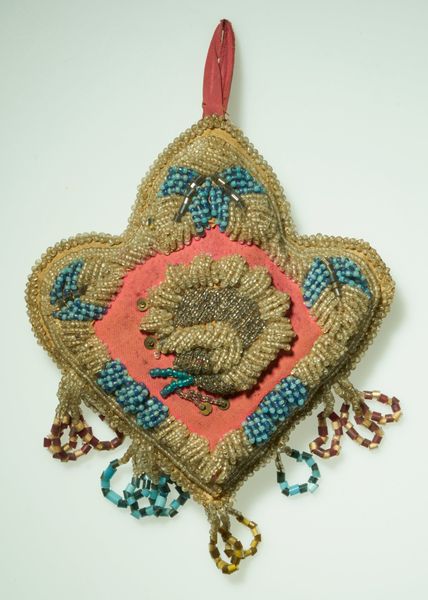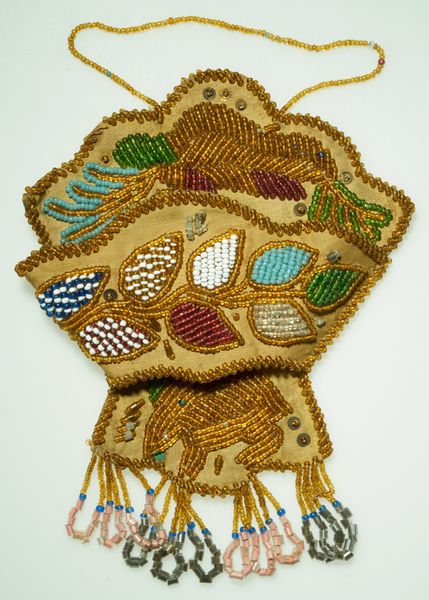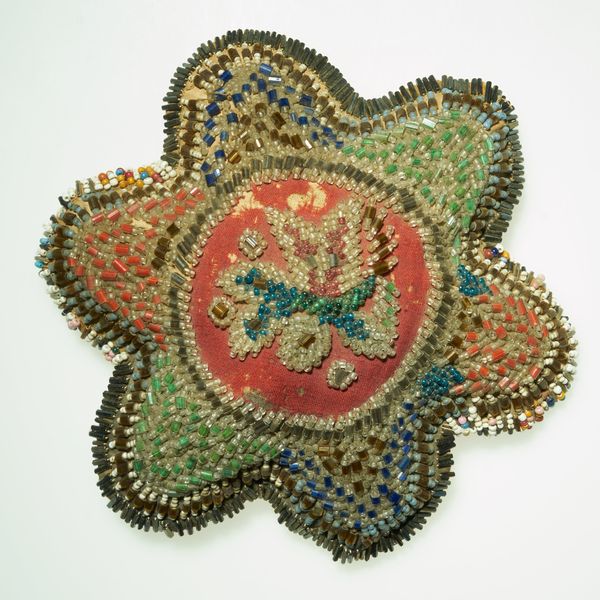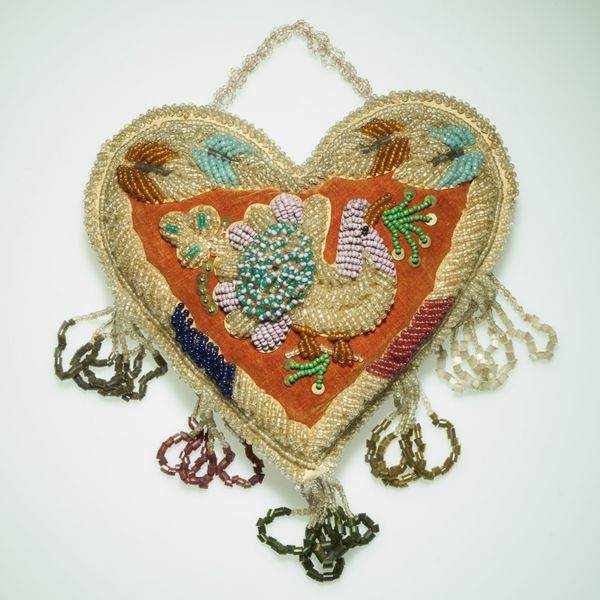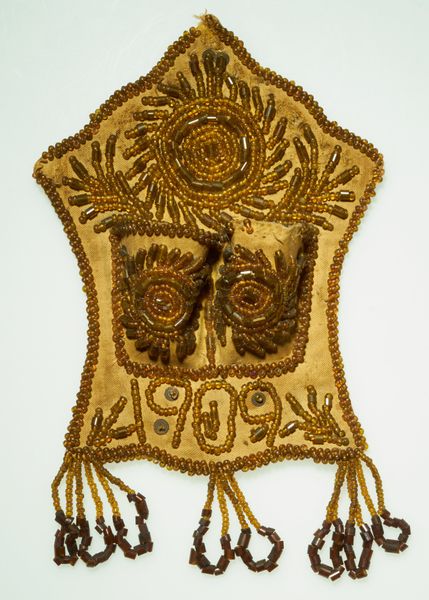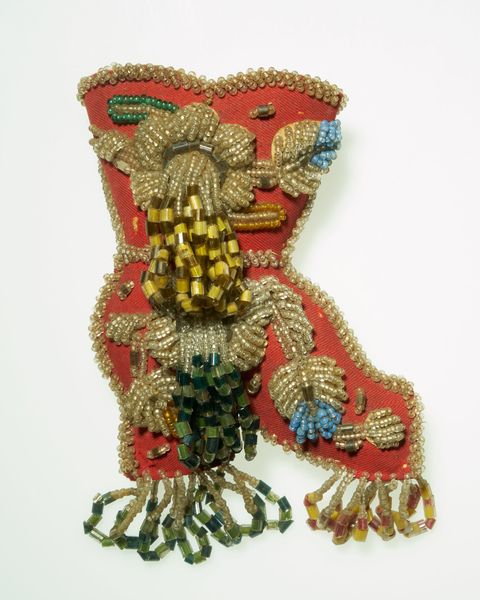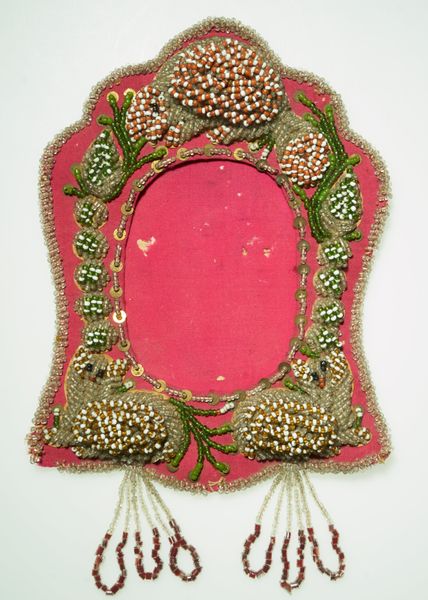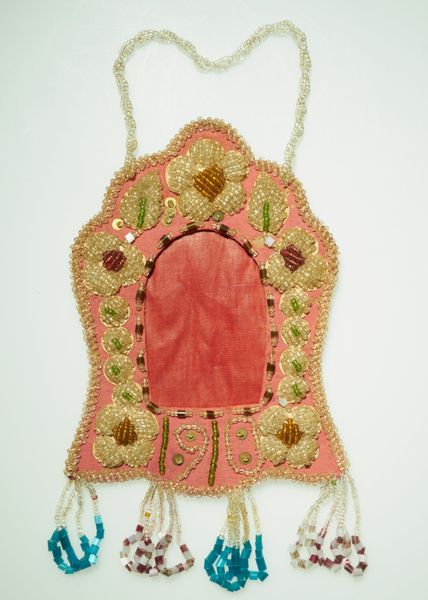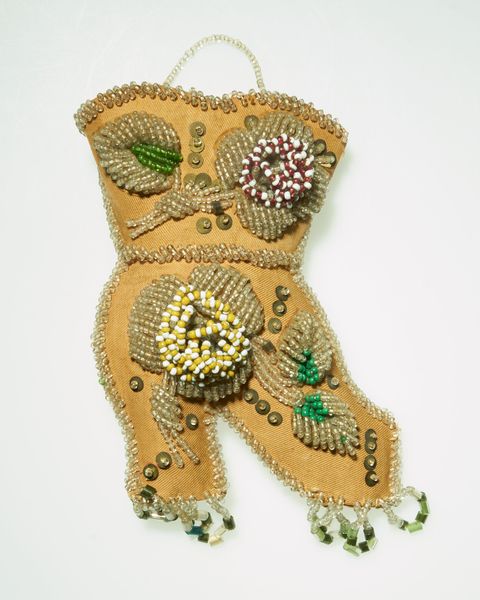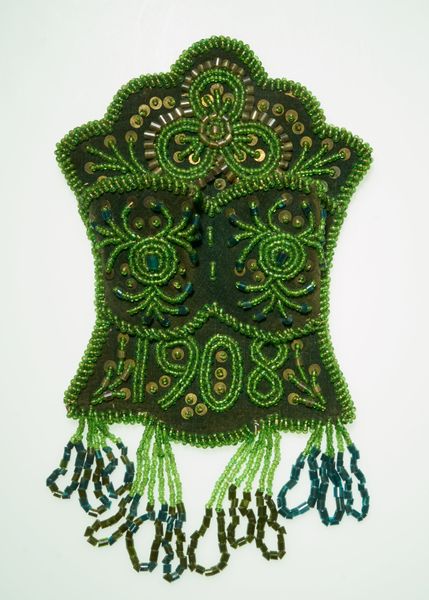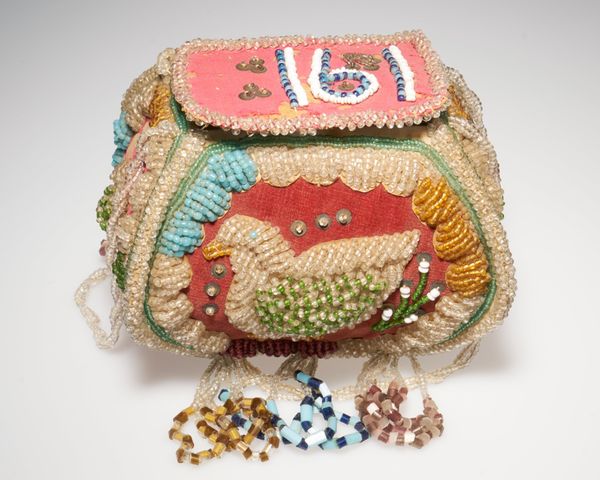
fibre-art, textile
#
fibre-art
#
textile
#
fashion and textile design
#
hand-embroidered
#
textile design
#
decorative-art
#
decorative art
#
indigenous-americas
Dimensions: 11 9/16 x 10 11/16 x 3 1/2 in. (29.37 x 27.15 x 8.89 cm) (without dangles)
Copyright: Public Domain
Curator: Immediately, I see patience. Mountains of it, woven into every shimmering bead. Editor: Precisely! What we have here is a Pincushion, dating to around the 20th century, created by the Haudenosaunee, or Iroquois, people. The object currently resides at the Minneapolis Institute of Art, notable for their rich collection of Indigenous textiles. It seems to employ materials such as cotton, paper, and, significantly, a variety of glass beads. Curator: The colors pop despite being muted, don’t they? The ochre background is the perfect canvas for the blues, greens, and reds of the beadwork. It feels like a miniature, sparkling landscape. Editor: That's an interesting reading. The hand-embroidered aspect draws attention to the incredible labour invested here. Considering the context, these weren’t mere decorations. The production and trade of beadwork became an important part of the economy and social exchange between indigenous people and European settlers in North America. Each piece became a representation of both artistic heritage and evolving economic systems. Curator: I'm drawn to the asymmetry of the floral and avian motifs. It feels organic, as though it grew on its own. It also makes me wonder, what stories did the artist whisper as they threaded each tiny bead? Was it intended as a practical object, or something more symbolic? Editor: Possibly both. Objects such as these show the blending of aesthetics, function, and market value. We also see how Indigenous craft challenged the imposed values separating the utilitarian and fine arts, which at the time devalued the Indigenous modes of creation and consumption. Curator: Right. Seeing this Pincushion reminds us that art is never created in a vacuum. It's always speaking to—or resisting—the powers at play. Editor: I agree entirely. The careful arrangement of beads offers a complex study of commerce and creativity. An object such as this pushes us to think deeply about craft, labor, and material exchange between cultures and what we learn when we bring those stories into the conversation.
Comments
No comments
Be the first to comment and join the conversation on the ultimate creative platform.
